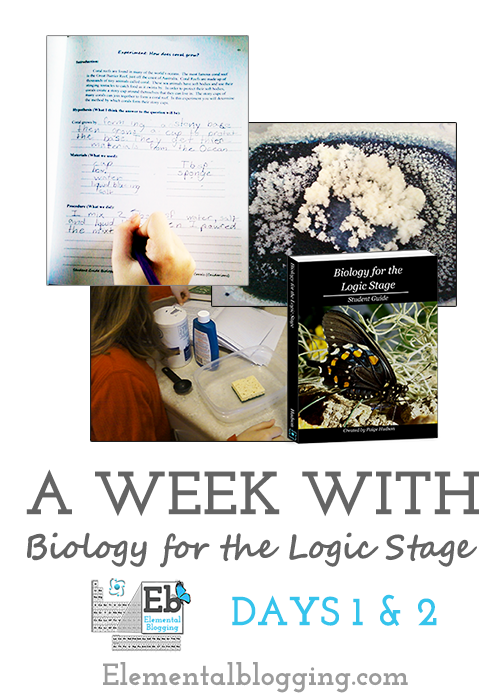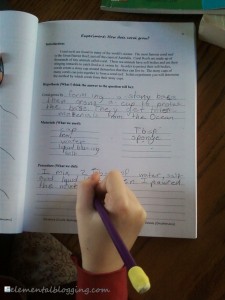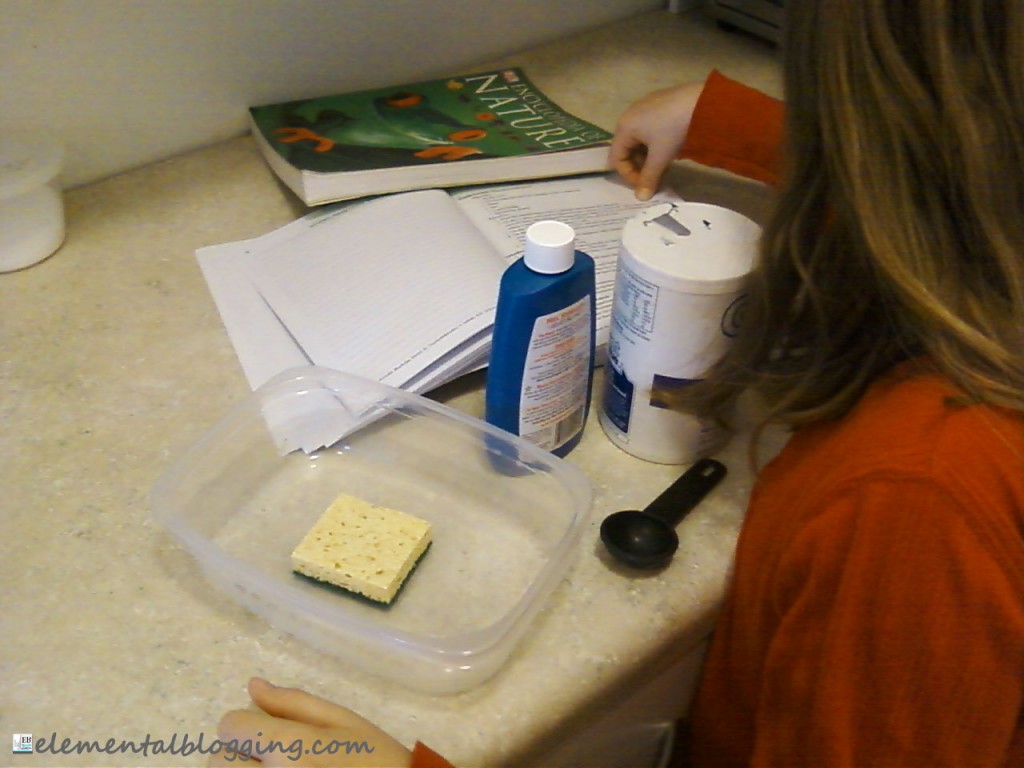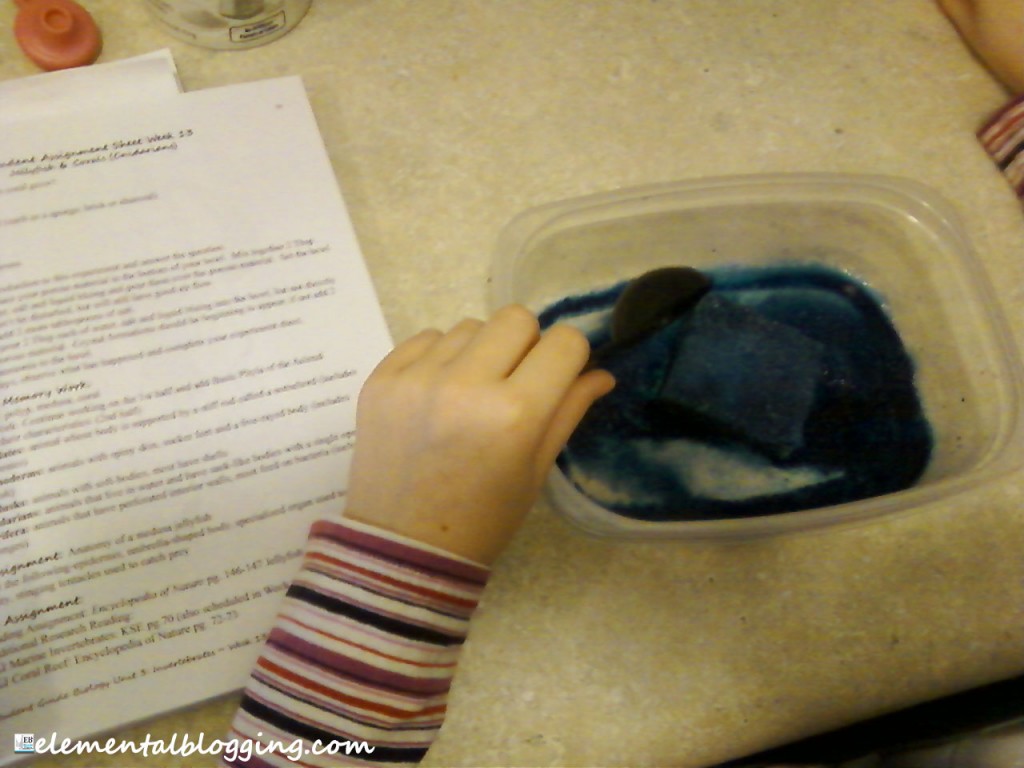 This year we have been working through our program, Biology for the Logic Stage. At first, my daughter was a bit miffed at me that I wouldn’t let her do Sassafras Science instead, but she has definitely warmed up to the idea now.
This year we have been working through our program, Biology for the Logic Stage. At first, my daughter was a bit miffed at me that I wouldn’t let her do Sassafras Science instead, but she has definitely warmed up to the idea now.
Last year I shared with you what a week with Physics for the Grammar Stage looked like in our homeschool, so I wanted to take some time to share what one of Elemental Science’s logic stage programs was like. We have typically been doing science five days a week since that’s what has worked best with our schedule.
A Week with Biology for the Logic Stage: Day 1 & 2
Here’s what we did on day 1 and day 2 of week 13.
Day 1: The Experiment
The focus of this week was jellyfish and coral, both of which are part of the phyla cnidarian. The week’s experiment was entitled “How does coral grow?” We began by reading the introduction together from the student guide…
Coral reefs are found in many of the world’s oceans. The most famous coral reef is the Great Barrier Reef, just off the coast of Australia. Coral Reefs are made up of thousands of tiny animals called coral. These sea animals have soft bodies and use their stinging tentacles to catch food as it swims by. In order to protect their soft bodies, corals create a stony cup around themselves that they can live in. The stony cups of many corals join together to form a coral reef. In this experiment you will determine the method by which corals form their stony cups.
We talked about how she thought corals grew and wrote that down on her experiment sheet. Then we read over the materials and procedure section…
Then we read over the materials and procedure section…
- On day 1, place your porous material in the bottom of your bowl. Mix together 2 Tbsp each of water, salt and liquid bluing and pour them over the porous material. Set the bowl where it won’t be disturbed, but will still have good air flow.
- On day 2, add 2 more tablespoons of salt.
- On day 3, pour 2 Tbsp each of water, salt and liquid bluing into the bowl, but not directly over the porous material. Crystal formations should be beginning to appear, if not add 2 Tbsp of ammonia to the bowl.
- After 4 days, observe what has happened and complete your experiment sheet.
I made sure that my daughter understood what she had to do and helped her gather the materials. She then followed the directions to complete day 1 of the experiment on her own.

Day 2: List of Facts
On day 2 my daughter read pages 146-147 from the DK Encyclopedia of Nature. After that, we discussed the spread using the questions provided in the teacher’s guide….
- Name some characteristics of the animals that make up the phyla cnidarian.
- Describe the basic anatomy of an animal in the phyla cnidarian.
- Name & describe the two forms (or shapes) of cnidarians.
- How does a jellyfish move?
- What is the purpose of a coral polyp’s hard exoskeleton?
- How fast do corals grow?
- How do sea anemones catch their prey?
Then I sent my daughter off to write a list of 6 to 8 facts from the passage. Here’s what she came up with…
- Jellyfish and coral are part of the phyla cnidarian.
- They have few organs.
- A polyp’s shape is cylindrical, a medusa is umbrella-shaped.
- Jellyfish move by squirting water out of their bodies.
- The coral’s hard exoskeleton is to help protect the organs.
- Coral grows 5% every year.
- Sea anemones catch their prey by shocking them.
We have been working on her including one fact from each section on the spread, so I was relatively pleased with this. Even though she missed a few, I didn’t have her go back and redo it because I knew that we were going to be writing about the subject later in the week. After that, we checked on the experiment and my daughter did what she needed to for day 2.

Well, that’s what we accomplished on day 1 and 2 of week 13. Come back on Thursday to see what day 3 and 4 looked like!
Don’t miss a post from this series…
- A Week With Biology for the Logic Stage: Day 1 & 2 (this post)
- A Week With Biology for the Logic Stage: Day 3 & 4
- A Week With Biology for the Logic Stage: Wrap-up
 Sign up below to receive weekly tips & tools for homeschool science and we'll send you a FREE copy of
Sign up below to receive weekly tips & tools for homeschool science and we'll send you a FREE copy of 
[…] with…, biology, Biology for the Logic Stage, elemental science On Tuesday I shared with you our day 1 & 2 from Week 13 of Biology for the Logic Stage and now I’m back to share with you our routine […]